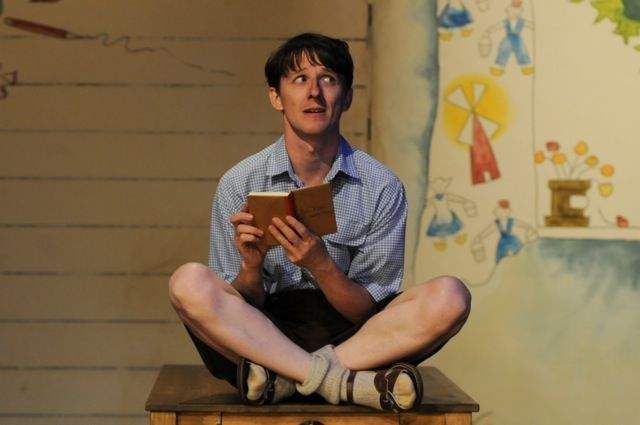The Book of Everything
Children know, but adults tend to forget, that words, books and whimsy can provide strength and solace in the pursuit of happiness.
Overview
Joyful, wise, sad and scary. These are the words a little girl used to describe The Book of Everything to me after the show. She was nine years old, as is Thomas Klopper, the hero of Guus Kuijer's acclaimed story.
I asked her what she thought of it because I found it genuinely frightening in parts and deeply distressing in others. I was forgetting that children don't come to a show with the same emotional baggage as adults; they’re less concerned with the shades of grey in characters. The Book of Everything certainly tackles some big issues, like domestic abuse, postwar faith and paternal power, but it's ultimately an uplifting story about a scared boy who learns how to be brave.
Even though his father has told him (in his stern pedant's tone) that the only important books are about God, Thomas Klopper is determined to write a book about you guessed it everything. Into the book go his wildest hopes, fears and imaginings: tropical fish swimming in the canal, a deluge of divine frogs during summer, the son of God strolling through suburban Amsterdam. Thomas also jots down his greatest wish: to be happy when he grows up.
A humungous duplicate of Thomas’s diary dominates Kim Carpenter's set, and in it are Thomas's drawings of the Klopper home, the fishy canal, the forbidding church and Mrs van Amersfoort's witch’s lair. We (literally) get the picture that what Thomas really wants is for the people around him to be happy as he turns its pages with pride and pleasure. The rest of the stage is empty save for a wooden table and some chairs, and members of the cast skilfully manage the sound effects both on and off stage. This works splendidly in scenes where Thomas’s love interest a beautiful girl with a creaky leather leg tries to get close to skittish Thomas with varied success.
Adapted for the stage by Richard Tulloch, this production is commissioned by Kim Carpenter’s Theatre of Image and directed by Neil Armfield. Set in postwar Amsterdam in 1951, the play has a certain old-timey, quaint quality that makes Thomas’s childish fantasies all the more enchanting. That said, the sometimes confronting subject matter hints darkly at the depth of understanding that children are capable of, and the violence, though stylised, is unsettling. We see Thomas retreat, again and again, into his imaginary life as all the wrong in the world overwhelms him. Maybe though, that’s the point and what children know but adults tend to forget is that words, books and whimsy can provide strength and solace in the pursuit of happiness.





